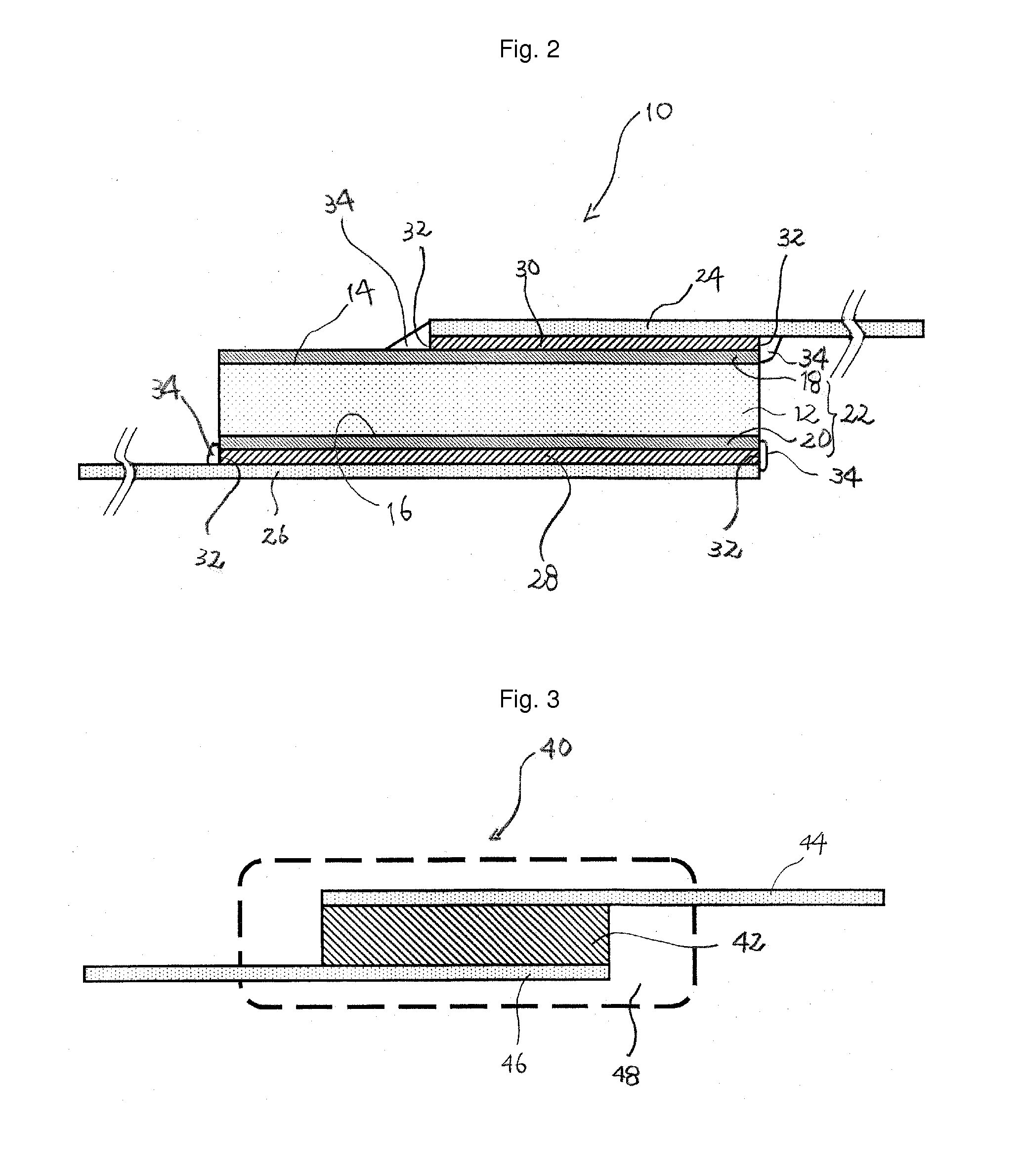PTC Device and Secondary Battery Having the Same
- Summary
- Abstract
- Description
- Claims
- Application Information
AI Technical Summary
Benefits of technology
Problems solved by technology
Method used
Image
Examples
example 1
[0047]A PTC device A of the present invention as shown in FIG. 4 was produced by thermal compression-binding a PTC component sandwiched by films (provided that the end of the lead was exposed). During the thermal compression binding, only the film portion extending outside from around the PTC component was pressed so that force would not be applied to the PTC component (the lead section was pressed).
[0048]The film used was a laminated film of a polypropylene resin layer and a polyethylene resin layer (thickness: 100 μm). This film was used so that the polypropylene resin layer was on the outside.
[0049]Other conditions are shown below:
[0050]PTC component used (trade name: PolySwitch, manufactured by Tyco Electronics Japan G.K.)
[0051]Lead: nickel (trade name: NB201, manufactured by Neomax Co., Ltd., thickness: 150 μm)
[0052]Conductive material: lead-free solder (alloy solder of tin, silver and copper) Thermal compression binding condition: Pressed for 10-40 seconds at a temperature of ...
example 2
[0053]A PTC device B of the present invention shown in FIG. 3 was produced by using the same PTC component as Example 1 and insert-molding a polypropylene resin. The polypropylene resin used was, the trade name: Prime Polypro, manufactured by Prime Polymer Co., Ltd. The conditions for the PTC device B were the same as for the PTC device A except for the protective member.
[0054]The PTC devices A and B thus obtained were subjected to an alkali immersion experiment which was conducted by immersing them in a KOH aqueous solution (1N) at 60° C. for 3 months. The condition of the interface between the protective member and the lead was observed to evaluate the effect of alkali. A holding current test (I-V test) was performed on the PTC devices after the immersion. Also, for comparison, the same test was conducted on other PTC components having the same specification as the PTC components used in the production of the PTC devices. The results are shown below:
PTC device APTC device BRinitia...
PUM
 Login to View More
Login to View More Abstract
Description
Claims
Application Information
 Login to View More
Login to View More - R&D
- Intellectual Property
- Life Sciences
- Materials
- Tech Scout
- Unparalleled Data Quality
- Higher Quality Content
- 60% Fewer Hallucinations
Browse by: Latest US Patents, China's latest patents, Technical Efficacy Thesaurus, Application Domain, Technology Topic, Popular Technical Reports.
© 2025 PatSnap. All rights reserved.Legal|Privacy policy|Modern Slavery Act Transparency Statement|Sitemap|About US| Contact US: help@patsnap.com



